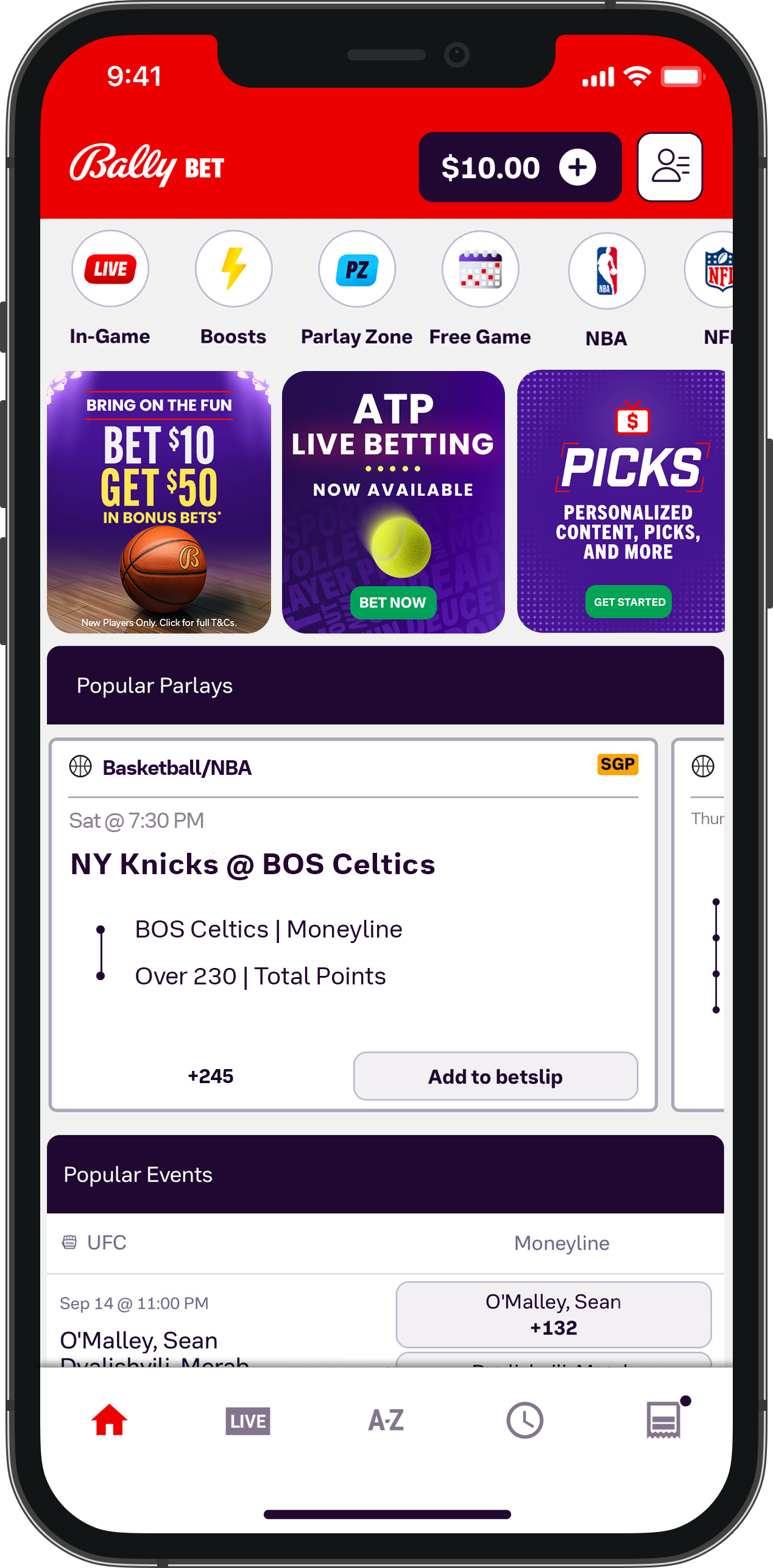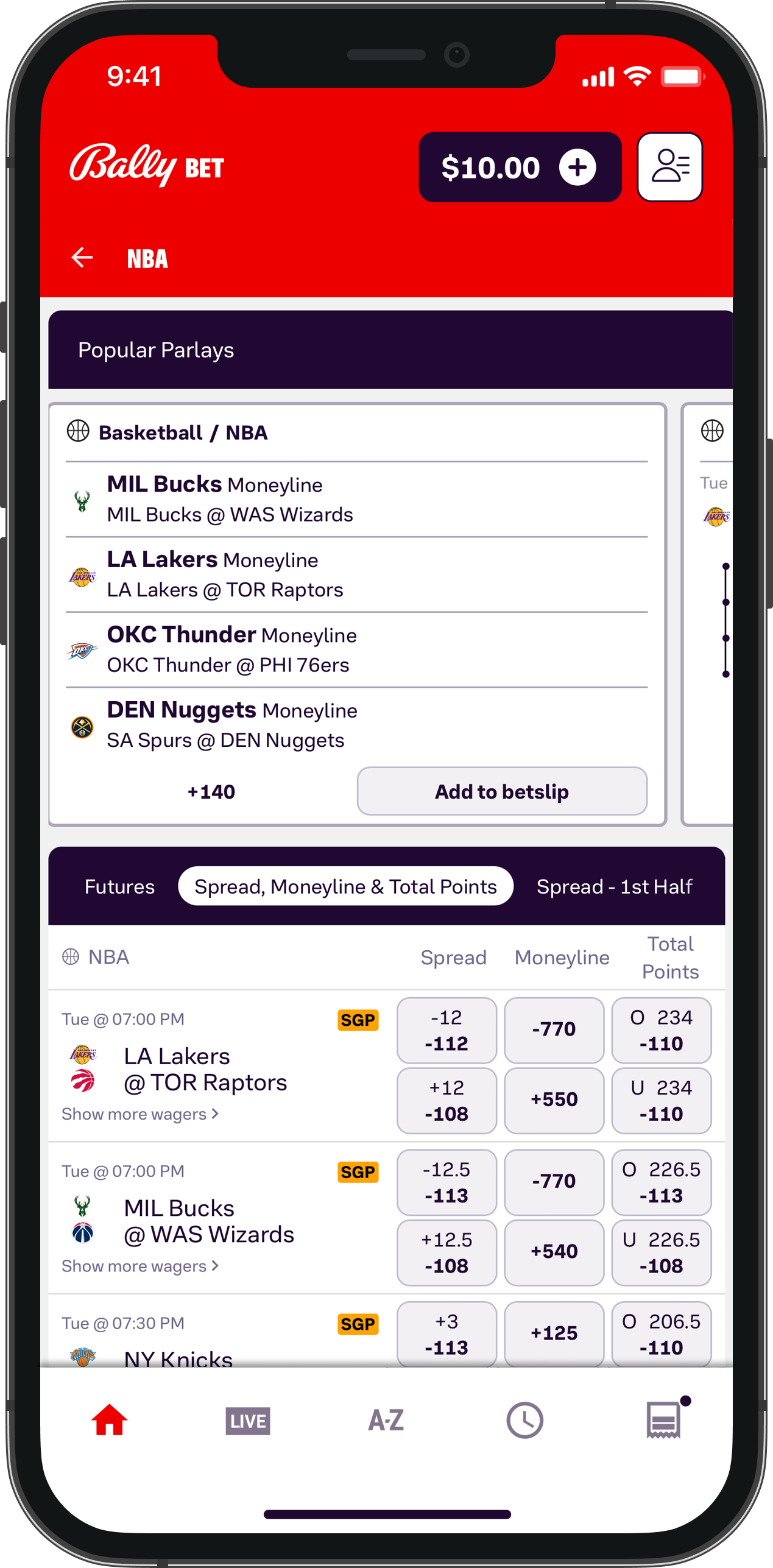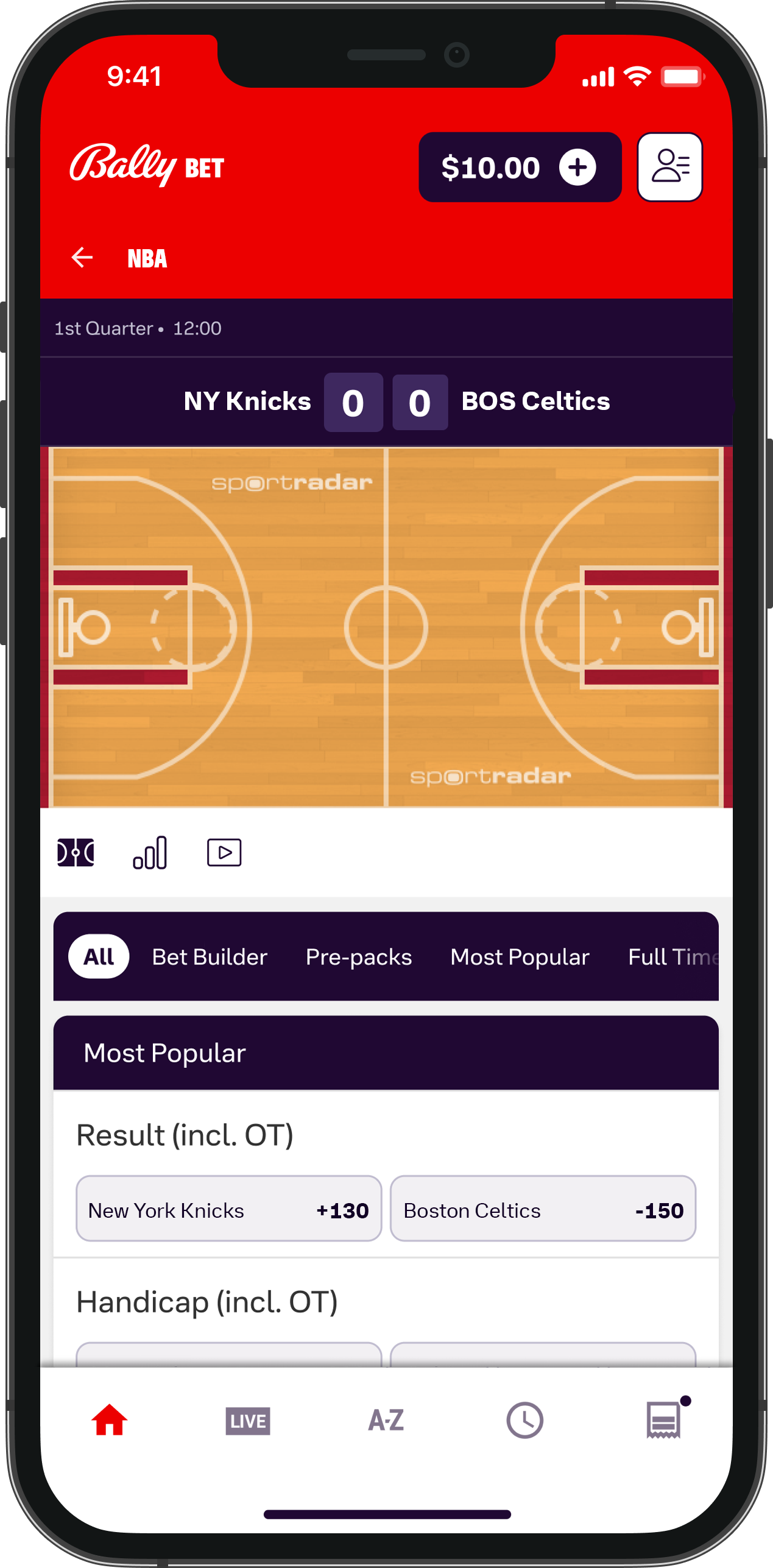Baseball Betting at Bally Bet Sportsbook
Baseball is a great sport to bet on. With a slew of games throughout the regular season, there's never a shortage of opportunities to get in on the action. Whether you want to wager on a team to continue its hot streak, a pitcher’s strikeouts, or a batter’s base hits, baseball offers you a ton of ways to get involved.
The sport's overall consistency in results means that anyone can quickly get the hang of the likely winners and losers. And for the seasoned pros? It's the perfect arena to continually flex your knowledge and skills. Baseball remains one of America’s most popular sports for a reason.
In this guide, we'll break down how to decipher baseball betting odds, explore the different wagering options like moneylines, run lines, and over/under bets, and dish out some handy tips so you’ll know your ERAs from your RBIs.
So, grab your glove and let's get down to some baseball betting.
How to Read Baseball Betting Odds
Understanding baseball betting rests on grasping the ins and outs of the odds. You’ll find baseball bets usually presented as a positive or negative three-digit figure. The payout for a winning wager is based on those odds.
Odds reflect the likelihood of a particular outcome in a game, which influences the potential payout based on your wager. Getting cozy with the odds and baseball betting terms is another way to a better understanding of the game.
Positive and Negative Odds
The simplest way to understand what these numbers mean is to imagine you’re working with $100 every time you place your wager.
Positive odds
The greater the positive number, the greater the potential payout.
If the New York Yankees were valued at +150 to beat their crosstown rivals, the New York Mets, it means you'd win $150 on top of your original $100 bet.
If the Yankees went on to win, your total payout would be $250 ($150 wager and your initial $100 stake returned).
Negative odds
When you look at negative odds, it’s better to think of them in terms of wanting to win the $100 rather than betting it. That’s because the number reflects what you need to wager in order to win $100
So, if the same New York Yankees are priced at -150 in their game against the Mets, you’d have to bet $150 to win $100.
Popular Baseball Bets
Baseball has its own playbook for betting fun. Whether you're choosing the winning team, guessing the total runs scored, or even predicting the pitcher's strikeout count, there’s excitement to be had with every swing of the bat.
For rookies in the world of baseball betting, look no further than the moneyline. It’s the most straightforward way of betting on baseball. Simply put, you’re wagering on the winner or loser. Unlike baseball spread betting, which has a few more steps to it, if you’re betting on the moneyline, all you need to do is keep an eye on the result.
Of course, there are many other ways to bet, so let’s dive into them. We’ll cover the differences between run lines and over/under tickets, give examples of the various ways to place props, and explain what a parlay bet is in the context of a baseball game.
Moneyline
Getting into baseball betting usually means playing the moneyline – or, in other words, betting on the winner or loser of a game. As straightforward as this bet may seem, it’s still worth taking into account everything from the form guide and home field advantage to the starting pitcher, hot batters, and RBI kings.
Understanding the odds
Pay attention to those little symbols: If you see a plus sign (+), that team's the underdog, while a minus sign (-) means they're the favorite.
Listing your pitcher
Because starting pitchers play such an important role when predicting a winner or loser, you have the option of listing your pitcher when placing a bet. This comes with a few considerations.
Your bet is valid only if your nominated pitcher takes to the mound.
If your pitcher is benched or pulls up lame in the warm-up, your wager is a push and you get your money back.
If you don’t list your pitcher, you’re betting with action. That means it doesn’t matter who sends down the first pitch, your bet is valid.
Run Line Bets
In a run line bet, you wager on the winning or losing margin. It’s similar to spread betting and, in baseball, is typically set at 1.5 runs. But it can be anything and will change in live betting.
Here’s a quick example:
The Run Line
A run line on a Yankees-Dodgers game might have the favored Yankees at -1.5, meaning they’re expected to win by two or more runs.
The Dodgers would be +1.5 as underdogs. That means they have to lose by less than two runs or win the game outright
The Price
Let’s say the Yankees are priced at -150 on a -1.5 run line and the Dodgers are at +150 on a +1.5
If the Pinstripes win 3-2, the bet would lose because the Yankees have failed to win by two or more runs.
If the score finishes 4-2, the bet would win.
If you bet on the Dodgers to lose and the game finishes 3-2, the bet wins. That’s because they’ve lost by less than two runs. If the game finishes 4-2, the bet loses as they’ve lost by more than two runs.
Over/Under Bets
The over/under bet is a fun way to add a little spice to a game. You have to predict the total combined number of runs of the two teams.
Sportsbooks consider a few factors when calculating the odds for this, such as pitchers’ form, win streaks, and starting lineups. These are the factors you should consider when placing your bet, too.
What to look out for
The over/under can be either half a digit or a whole number.
The book will set the number. For example, let’s say nine. You place your bet on both teams scoring more or less than that figure.
How over/under bets work based on the game result
Let's imagine our game between the Yankees and Dodgers finishes with the Pinstripes taking the W at 4-2.
Bets that predicted under nine would win, as six runs were scored in total. If the score finishes 6-5 (meaning 11 runs have been scored), the over nine bet would win.
Wagers are considered a push if the score ends on the total set by the book. That’s why you might see over/under numbers listed with a decimal. They're there to mitigate pushes.
Props
Prop bets are all about wagering on game events that don’t necessarily have a bearing on the end result. We're talking about an over/under bet on the starting pitcher’s strikeout count or the number of innings he’ll throw in a game.
Examples of prop bets
• The leadoff hitter’s total hits, runs, and RBIs
• Stolen bases
• First to score
• Total runs in a specific innings
• Over/under props on the number of combined home runs
They're some of the hardest aspects of baseball to predict, but these bets offer the opportunity to test your knowledge of the most intricate elements of the game. They're also super easy to manage on the Bally Bet platform.
You can find some more obscure opportunities with prop bets, like predicting the length of the national anthem, especially during big games like Opening Day and the World Series.
Parlays
A parlay bet simply means the combination of two or more bets on a single ticket. For the parlay to pay out, every bet - or leg - you place must win.
Things to know about parlay bets
Your bets can be almost any combination such as a moneyline wager on the Yankees to win, a run line on the victory margin, and an over/under on the total number of runs in the game.
You don’t have to bet on the same game or use the same type of bet. You could combine three moneylines such as the Yankees, Red Sox, and Diamondbacks to win on a given game night. Or combine a Yankees moneyline with a run line for the Red Sox and an over/under in the Diamondbacks game.
Each time you add a leg to your parlay you’re increasing your payout potential. But the difficulty increases with it.
Futures
Futures bets is some of the simplest ways to bet and potentially earn a big payout. However, they're also notoriously difficult to predict. An example of a futures bet could be betting on the World Series winner — at the start of the season. Other popular futures bets include American League and National League pennant winners as well as individual awards like the MVP and the Cy Young.
Baseball Betting Tips
Baseball betting is relatively easy to get to grips with. But after you've crunched the numbers and digested all the stats, there are a few things worth knowing before you place your wager. Here are some of our top baseball bet pointers:
Stay focused
Single out a team or league. By honing in on specifics, you'll be better equipped to spot those golden opportunities for value bets when they arise.
Know your stuff
When it comes to baseball betting, knowledge is power. So don't skimp on the research. Find the best resources out there and make full use of them to stack the odds in your favor.
Be patient
Sometimes it’s a waiting game. Give the league a chance to settle down. Who's going to be hot in the first month of the season? It’s very difficult to predict the big hitters with only April's Spring Training as a reference. You’ll be armed with a lot more valuable information after the first few weeks of a new season.
Baseball Betting App
Betting on sports with the Bally Bet Sportsbook app is as simple as a tap and a swipe. You can choose your favorite teams, players, and events — and place bets in seconds.
Once the bet is in, Bally Bet keeps tabs on the game's progress, and you can check the results in real time.
Underdogs odds are positive and have a plus sign (+) next to them. Favorites will be negative, with a minus sign (-) next to them.
Yes. Whether it’s a futures bet on a pitcher winning the Cy Young or an in-play props bet on a hitter’s RBIs, there are lots of ways to bet on individuals.
If a game is rained out or otherwise cancelled or postponed (without having started), your wager will be voided and returned to your account.
Yes. The more legs you add to your parlay, the riskier the bet becomes. However, the payout is higher.
Betting on baseball with us means you can choose from all the popular types of wagers including moneyline, run line, over/under, prop bets, parlays, and futures throughout the MLB regular and postseason. It's easy to manage your account as well as your bets, whether you're using our app or playing on the web.



